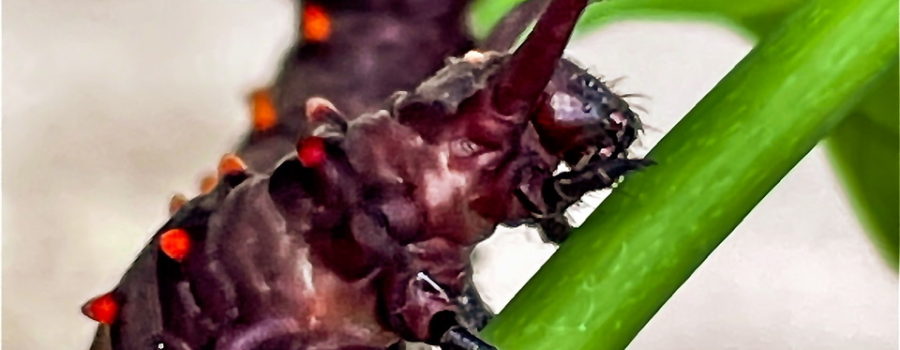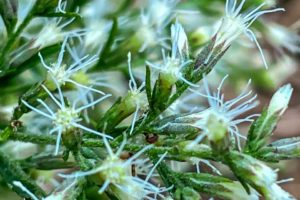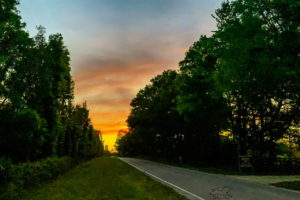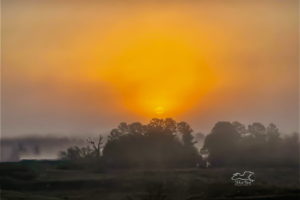This Interesting Caterpillar Becomes a Truly Beautiful Butterfly

Recently, I found a really weird, spiky, but not hairy black and orange caterpillar on the vine (the peeper) outside my bathroom window. The caterpillar was actively chewing away on the leaves on the vine, and based on what I saw of the leaves, this was not the first time. The caterpillar really stood out against the green foliage, and I guessed that it’s coloring was warning predators away. It didn’t seem at all concerned either about predators or about my interest in it. It munched away most of the time that I was taking photos of it. I even rolled the vine around in my fingers a bit to try to get some interesting angles without the caterpillar caring about it. With it’s warning coloration and weird spikes I made sure not to touch the caterpillar itself. Besides it is not my policy to pester my subjects. Had the caterpillar minded my attentions I would not even have rolled the vine around.

I was very intrigued with this interesting looking caterpillar, so I had to identify it as quickly as I could just for the sake of curiosity. It turns out it is a pipevine swallowtail (Batus philenor) caterpillar, and the pipevine swallowtail is one of my favorite butterflies! I absolutely love the bright blue coloration of the hindwings of the males. The females are very pretty, too, but they are somewhat muted in comparison to the males. In this area the females lay their eggs on the new growth and stems of the Virginia snakeroot vine (Aristolochia serpentaria), which is a highly toxic plant containing aristolochic acid. When the larvae hatch out they feed on these plants and ingest the toxins, which helps to protect them from predators. The larvae go through three instars before becoming pupae and eventually butterflies. In this area there are usually three generations produced each year. In cooler climates, there are usually only two generations.

These butterflies are fairly common in the United States and Central America, although they been declining, especially in the northern-most parts of it’s range. In the United States, these butterflies can be found from southern Connecticut through south central Florida, and west into Minnesota. They are also found along the southern part of the US as far west as Arizona and there is a small population in Northern California. They can be found in any habitat that can support pipevine, including meadows, open grasslands, and forest clearings as well as backyard gardens and butterfly gardens where people often plant pipevine.

I was so excited when I found out what that cool caterpillar was. I am going to keep a closer eye on that vine for eggs and for further larvae. I hope I can spot some younger instars of the caterpillars and maybe even some eggs. I may also plant a few more of these vines, since they are native, and see if I can attract more of these gorgeous butterflies.






Recent Comments